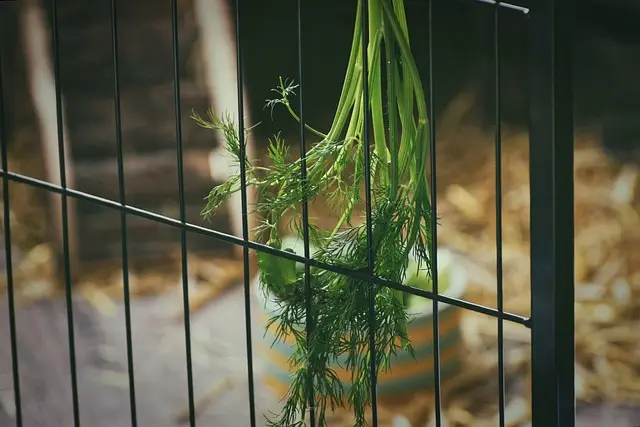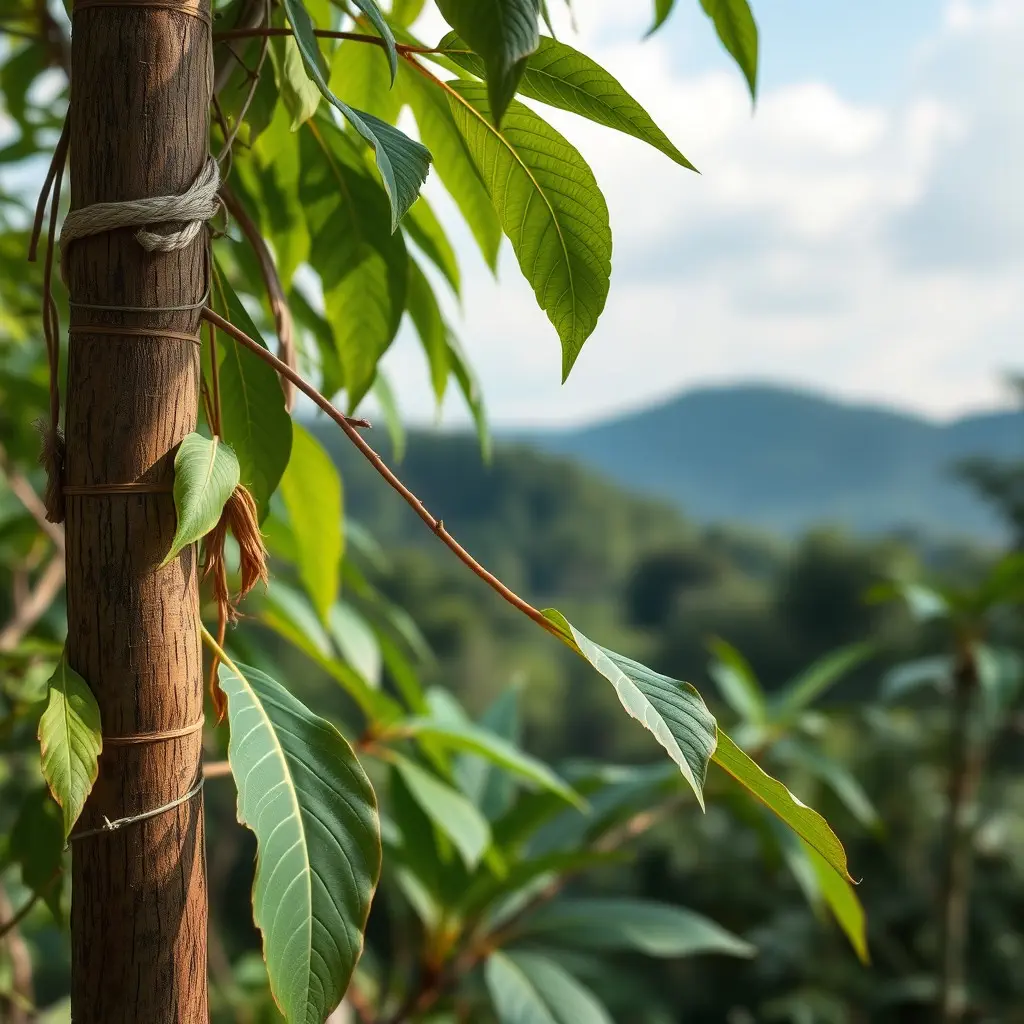Vietnamese Kratom is distinct from its Southeast Asian cousin, Malaysian Kratom, due to unique environmental conditions and a specific alkaloid profile that enhance its potency. The leaves, with their fine veins and robust texture, are particularly effective in extracting the bioactive compounds mitragynine and 7-hydroxymitragynine, which contribute to its stimulatory effects, including energy boosts, mood enhancement, and pain relief. The Vietnamese variety is noted for a more refined and nuanced experience compared to Malaysian Kratom, with careful cultivation techniques contributing to its efficacy. The differences in soil types and climate in Vietnam lead to variations in alkaloid content, influencing the user experience, and underscore the importance of understanding the unique aspects of each strain. Traditional agricultural practices in Vietnam, such as intercropping, affect nutrient availability and can result in a less uniform product compared to the industrialized methods in Malaysia's kratom industry. This emphasizes the significance of terroir in shaping the potency and effects of kratom, making Vietnamese kratom a unique choice within the broader spectrum of kratom strains available, including Malaysian Kratom. Users should consider these regional differences when selecting kratom to ensure they achieve their desired effects.
Explore the intricate world of Vietnam Kratom leaves, a botanical cousin to the well-known Malaysian Kratom. This article delves into the unique potency and distinct characteristics that set Vietnamese Kratom apart, offering insights into its diverse applications. We’ll traverse the cultivation practices that give these leaves their signature effects, drawing comparisons to the Malaysian strains renowned in Kratom lore. Join us as we navigate the nuances of Vietnamese and Malaysian Kratom leaves, uncovering how these factors influence the user’s experience and the leaf’s efficacy.
- Unraveling the Potency of Vietnamese Kratom: A Closer Look at Its Distinct Characteristics and Uses
- The Cultivation Chronicles: Insights into the Growing Practices of Vietnamese Kratom and How They Compare to Malaysian Strains
- Navigating the Nuances: Understanding the Differentiators Between Vietnamese and Malaysian Kratom Leaves and Their Impact on Effectiveness and Experience
Unraveling the Potency of Vietnamese Kratom: A Closer Look at Its Distinct Characteristics and Uses

Vietnamese Kratom, a strain closely related to its Southeast Asian cousins, including the well-known Malaysian Kratom, exhibits distinct characteristics that have garnered attention within botanical circles and among enthusiasts seeking natural stimulants. The potency of Vietnamese Kratom is often attributed to its unique climate and soil conditions, which can influence the alkaloid content, a key component responsible for its effects. Unlike other strains, Vietnamese Kratom leaves are known for their fine veins and robust texture, which contribute to a more efficient extraction of these bioactive compounds. The alkaloids present in these leaves, primarily mitragynine and 7-hydroxymitragynine, are the principal active ingredients that provide its stimulatory effects when consumed. Users report a wide range of benefits from this strain, including heightened energy levels, mood enhancement, and pain relief, which can be attributed to these specific alkaloid profiles. The Vietnamese Kratom leaves’ efficacy is further enhanced by the meticulous cultivation practices employed in Vietnam, ensuring a consistent and high-quality product. In comparison to Malaysian Kratom, while they share similarities due to their regional proximity, Vietnamese Kratom often presents a more refined and nuanced experience, making it a sought-after option for those familiar with the effects of Kratom. The nuances in its alkaloid content can lead to differences in the experiences reported by users, highlighting the importance of understanding the unique qualities of each strain.
The Cultivation Chronicles: Insights into the Growing Practices of Vietnamese Kratom and How They Compare to Malaysian Strains

Vietnam’s emerging kratom industry offers a unique perspective on the cultivation of this tropical plant, known scientifically as Mitragyna speciosa. Unlike its Southeast Asian counterpart, Malaysian Kratom, Vietnamese strains are cultivated under different environmental conditions, which can lead to subtle differences in alkaloid profiles and effects. The climate in Vietnam, with its distinct monsoon season and diverse soil types, presents a distinct environment for kratom trees compared to the more established kratom farms in Malaysia. Vietnamese growers often adopt traditional agricultural methods, intercropping kratom with other subsistence crops, which can influence the nutrient uptake and potentially affect the alkaloid content in the leaves. This practice, while sustainable, may result in a less consistent product compared to the more industrialized approach of Malaysian kratom farms. The soil quality and humidity levels also play a crucial role; Vietnamese kratom trees tend to absorb different soil minerals, which can lead to variations in alkaloid concentration, notably mitragynine and 7-hydroxymitragynine. These elements contribute to the unique experiences reported by users of Vietnamese kratom strains, setting them apart from their Malaysian counterparts. The comparison between Vietnamese and Malaysian kratom underscores the importance of terroir in botanical cultivation, influencing the potency, effects, and overall user experience with this versatile plant.
Navigating the Nuances: Understanding the Differentiators Between Vietnamese and Malaysian Kratom Leaves and Their Impact on Effectiveness and Experience

When exploring the realm of kratom, the distinctions between Vietnamese and Malaysian kratom leaves play a significant role in shaping the user’s experience and effectiveness of the product. Each region’s environmental conditions—soil quality, climate, and altitude—contribute to the alkaloid profiles within the leaves. Vietnamese kratom is known for its fine veins and mature leaves that often yield a higher concentration of mitragynine, which is one of the primary alkaloids in kratom. This can lead to effects that are more stimulating or energizing, making it a popular choice among users seeking an uplifting experience. On the other hand, Malaysian kratom, particularly from regions like Malaysia’s Sarawak and Borneo, is celebrated for its balance of alkaloids, which can provide a harmonious blend of both stimulating and sedating effects. The specific strains—such as the iconic Red Vein or White Vein kratom from Malaysia—are carefully harvested and processed to maintain their unique characteristics, ensuring that users have access to a diverse range of experiences based on their preferences and needs. Understanding these nuances is crucial for those looking to harness the full potential of kratom, as the varying alkaloid concentrations can significantly influence the outcomes one might experience from each type.
In examining the unique attributes of Vietnam Kratom leaves, this article has shed light on their distinct characteristics and uses, setting them apart in the realm of herbal supplements. The cultivation practices that give these leaves their particular potency have been compared with those of Malaysian Kratom, revealing both similarities and differences that influence their effectiveness and user experience. For those seeking an alternative to Malaysian strains, Vietnamese Kratom presents a compelling option, with its own set of benefits and nuances to consider. As the understanding of these leaves deepens, it becomes evident that each kratom variety, including Vietnamese, has a valuable place in the broader landscape of natural wellness products.






